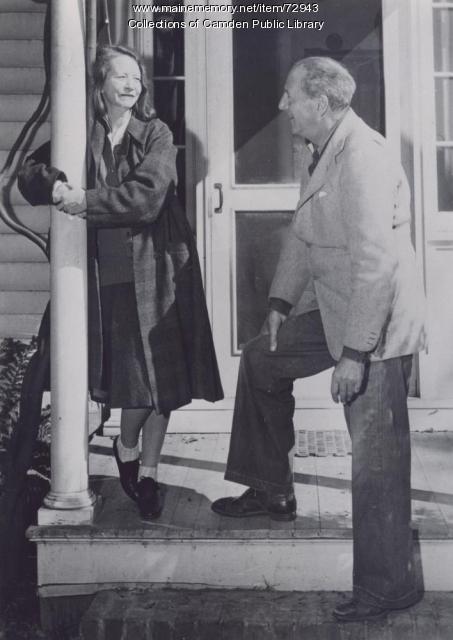House committees that hold hearings on contraception -- and don't invite any women to testify on the panel. State legislatures like Idaho, Virginia, and Texas trying to force women to undergo invasive procedures. Senators who want employers to be able to deny women life-saving health care because it violates their "moral convictions." Right-wing radio hosts who call young women who testify about contraception "sluts."The issues have come to surface during the primary campaigns and can be expected to continue into the general election, competing with issues relating to the economy. I wondered what my mother had written on this topic that might resonate today.
When it came to feminist issues, my mother was torn in two directions. On the one hand, she became a Catholic in 1938, when my sister Olga was four years old. As a convert, she was highly orthodox. So in the 1970s she wrote articles defending the traditional role of the nurturing mother. She quoted G. K. Chesterton who extolled the freedom of a woman in the family - out of the rat race and with the potential to become Queen of her Home. However, given the choice, women have shown they like the idea of joining the rat race, and they have done well.
On the other hand, my mother was an admirer of the idealism of the suffragettes. She had two prominent feminist American aunts, Inez Milholland and Edna St. Vincent Millay. Her Dutch aunt Maria Pijnappel Boissevain was a leader in her country's movement to grant the vote to women and became one of the first female elected officials; at the same time she gave birth to and raised ten children.
Like Maria Pijnappel, my mother had a significant career as well as raising six children. She would have fought for the right for women to make their own choice, whether to work or not. If she were alive today, I think she would above all be distressed at the tone and content of the debate. She had experienced discrimination against women from the age of three:
My first experience of discrimination against women was when I was three and played with my little boy cousins [Eugen and André van Hall] of four and five. "You're only a girl," they'd sneer. And then they made immense efforts to prove their superiority, which had more to do with their greater age than with their being male. But I was happy to admire them; they were handsome little fellows. One had curls [André?], but I really preferred the one with straight hair [Eugen?], who asked me to marry him when his brother wasn't looking.Related Posts:


